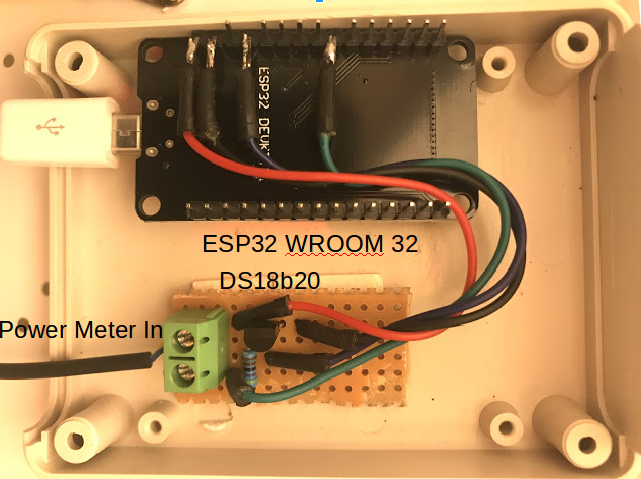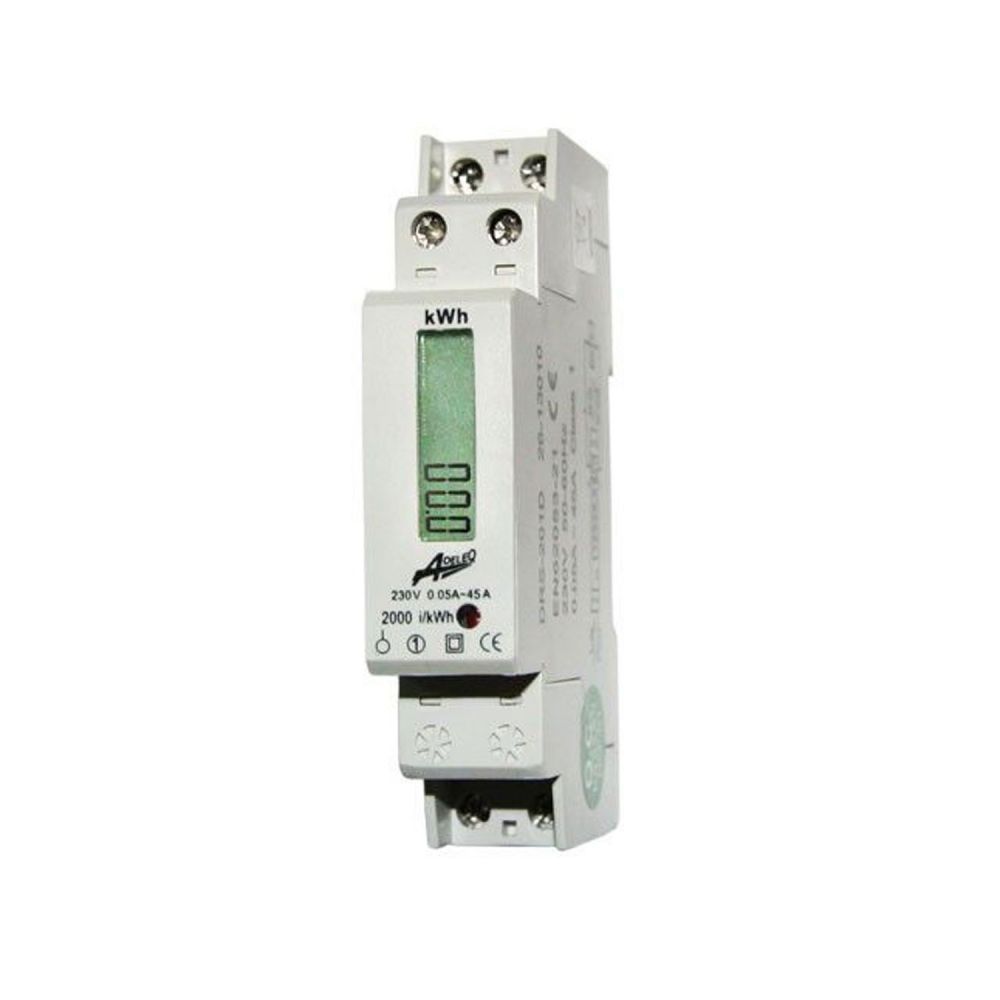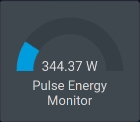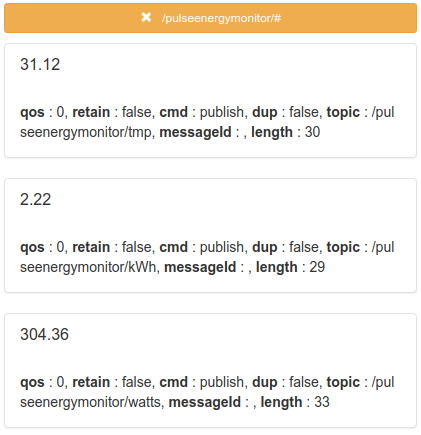This project presents a simple solution for measuring the energy consumption of a house. The key element is a cheap energy monitor with pulse output, connected to an ESP32 WROOM 32 board. This, over WiFi using mqtt protocol can be easily connected to a home automation system to report:
- instant power (in Watt);
- total power consumption (in kWh);
- Device temperature (in Celsius) using a DS18b20 temperature sensor.
OTA support is enabled, after the first software upload, the ESP will available for updates on the local network over Arduino IDE.
The power meter adeleq_02-553_DIG operating range is 0.05A-45A, and (the most important part) provide 2000 impulses / kWh. Emitted pulses for detections have ~90 ms pulse width. The output is open collector, operating voltage, from 5-24V. In this case, the ESP32 supply provides 3.3V, but this is not a limitation. Other variants are available on the market, usually, the difference is the accuracy (i.e. pulses / kWh are only 1000 instead of 2000).
Below a sample picture for the output, where a light bulb (~53W) is connected to the power meter. The measured pulse between the two detections is about 30.71s, which leads to a value measured of ~58.61 Watts.Conversion from kWh to Watts, measured with a sensor of 2000 pulses/ kWh:
(<kilo Watt to Watt>*<Hour in secounds>/<impuse number>)/<time measured between pulses>
=>(1000*3600/2000)/31.71 => 58.71W
DS18b20 is a fast digital thermometer using 1-Wire protocol. The usual connection diagram is with a 4.7 kOhm pull-up resistor.
Below the wiring diagram, made with Easyeda tool. In noisy environments, the recommendation is to add a 33pf condensator between ground and energy sensor input pins (to avoid sporadic interrupts).

|

|
|---|
Clone the repository, update the .ino file in Arduino IDE with your local WiFi / mqtt configuration.
Note: you need to install the following libraries before compile: PubSubClient - for mqtt client, OneWire - for 1-wire communication and DallasTemerature - for DS18b20 temperature sensor.
Note: to enable serial debugging, uncomment the following line: #define DEBUG
Note: once flashed the the ESP32, after a succesfull connect to your WiFi, OTA update become available. This means the device can be mounted and the software can be flashed / updated over the your local network (see the new port under ArduinoIDE->tools->port->network ports).
/*mqtt declarations*/
const char* mqtt_server = "<IP OF THE MQTT SERVER>";
const char* mqtt_user = "<USER NAME>";
const char* mqtt_password = "<PASSWORD>";
...
/* SSID and Password of WiFi router */
const char* ssid = "<ROUTER SSID>";
const char* password = "<ROUTER PASSWORD>";
Upload the code in the ESP32 WROOM 32 board over USB, wire the board accordingly to the schematics. The output will be something similar on the mqtt topics:
Additionally the following mqtt commands can be used:
- topic: /pulseenergymonitor/cmd
- payload: c / r
c - clear kWh information
r - reset the device
Home Assistant is an open source automatization system, with a high number of component integratios. Is a good choise for complex IOT and DIY smart home atomatization. Below a panel component and a log file which shows the sensor information and energy consumption.
Paste the following lines in the configuration.yaml file:
sensor:
- platform: mqtt
state_topic: "/pulseenergymonitor/watts"
name: "Pulse Energy Monitor"
icon: mdi:gauge
unit_of_measurement: "W"
- platform: mqtt
state_topic: "/pulseenergymonitor/kWh"
name: "PEM kWh"
icon: mdi:gauge
unit_of_measurement: "kWh"
Energy consumption measurement has a specific component in Home Assistant, the utility meter, past into configuration.yaml file.
##################################
# Utility meter
##################################
utility_meter:
daily_energy:
source: sensor.pem_kwh
cycle: daily
weekly_energy:
source: sensor.pem_kwh
cycle: weekly
monthly_energy:
source: sensor.pem_kwh
cycle: monthly
/Enjoy.






